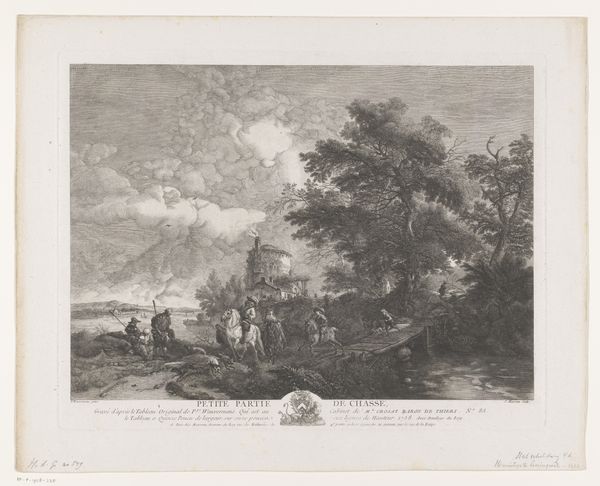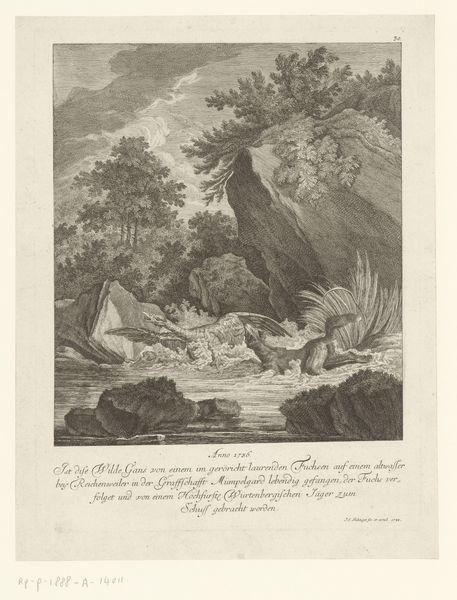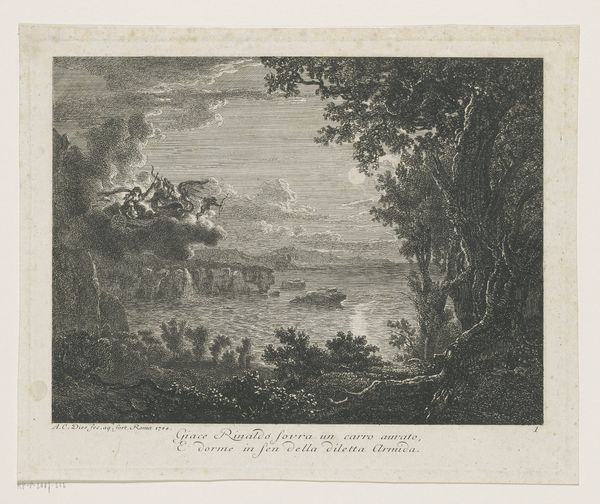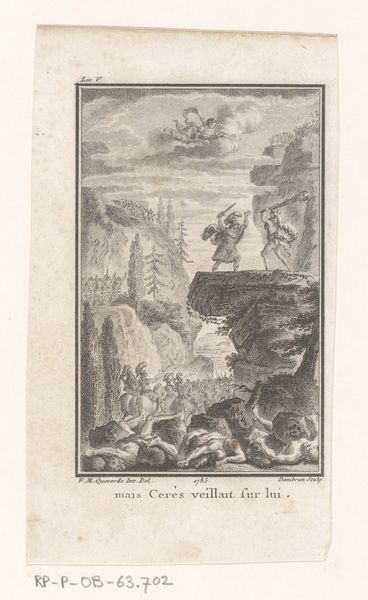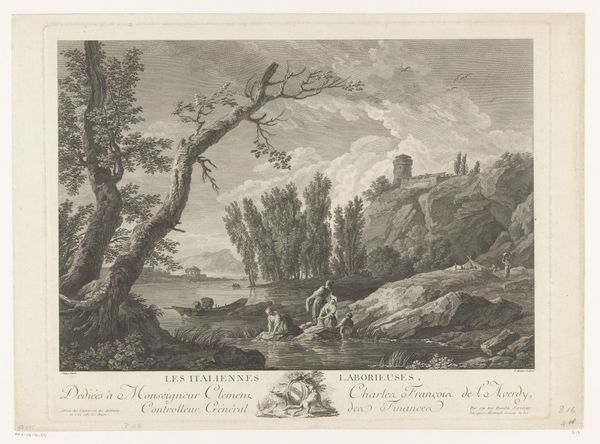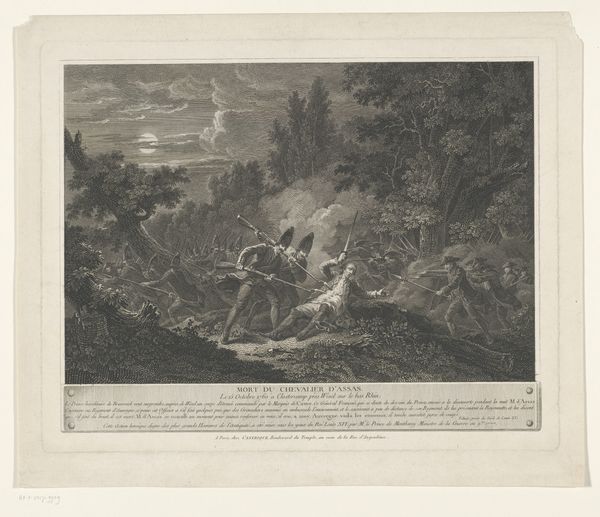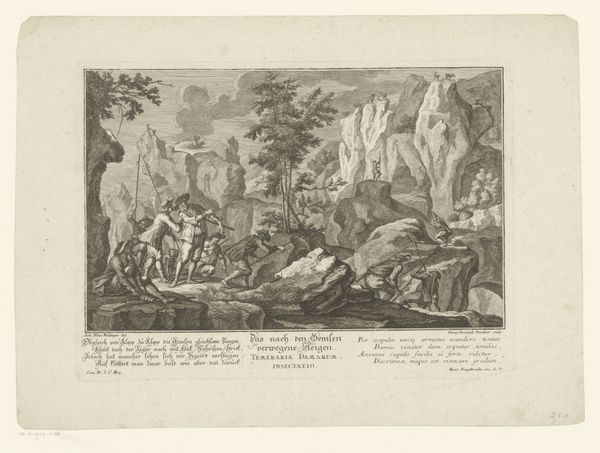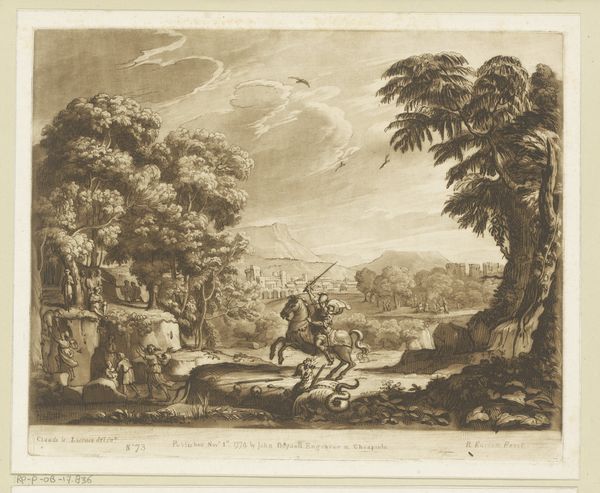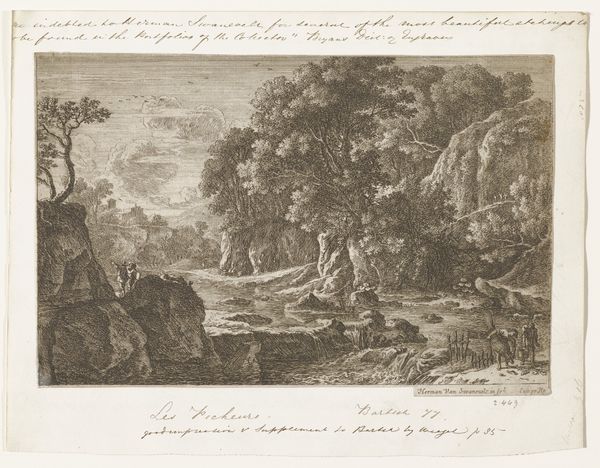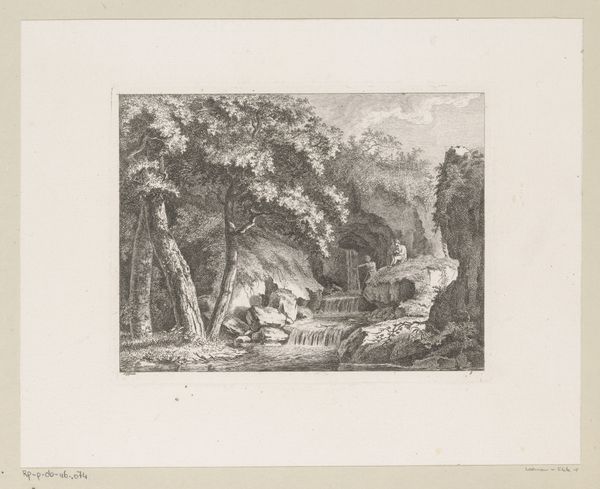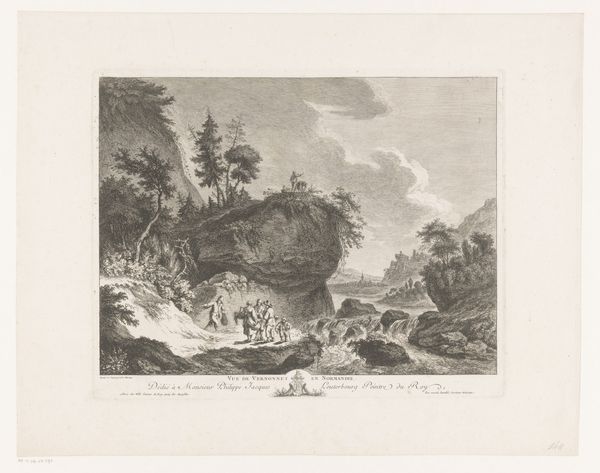
Stormachtig rivierlandschap met de vliegende wagen van Medea, getrokken door een Hydra c. 1792
0:00
0:00
print, etching
#
allegory
# print
#
etching
#
landscape
#
figuration
#
romanticism
#
history-painting
Dimensions: height 216 mm, width 269 mm
Copyright: Rijks Museum: Open Domain
Curator: This etching, created around 1792 by Albert Christoph Dies, depicts a stormy river landscape with Medea in her flying chariot. The swirling lines of the etching are quite evocative. What are your initial thoughts? Editor: It feels almost theatrical, the way the landscape is arranged, with Medea centered amidst this turbulent scene. As a print, made using etching techniques, how did Dies create such dramatic imagery? Curator: That’s an excellent question. Look at how Dies manipulated the etching process—the varying line weights, achieved through different depths of etching, suggest a real control of production. These choices indicate both a practical understanding of printmaking and a symbolic intention. The sharp contrasts might point to the social unrest percolating at the time. Is this a subtle commentary on the disruptions of power? Editor: I see what you mean. So, the materials and methods are inherently connected to the artwork's social commentary? Could you explain that connection a bit more? Curator: Etching, as a reproductive medium, was more accessible. Was Dies then commenting on accessibility, democratization of art for a wider audience? What did it mean to make images in this form during an era of immense social and political upheaval? The mass dissemination of prints allowed such anxieties, or potentially subversive ideas, to spread more readily among various strata of society. Editor: That's a fascinating connection that I hadn't considered before. The material's accessibility mirroring the potential spread of ideas. I had mainly viewed the imagery, now I realize I can also examine print production, too! Curator: Exactly! By interrogating the materiality and means of production, we gain insights into its cultural significance. Dies gives us insight into the labor and thought involved in even seemingly ‘simple’ art forms like landscape etchings. Editor: I'll never look at a print the same way again. Thanks! Curator: My pleasure. It is crucial that art is always seen within its material conditions.
Comments
No comments
Be the first to comment and join the conversation on the ultimate creative platform.

